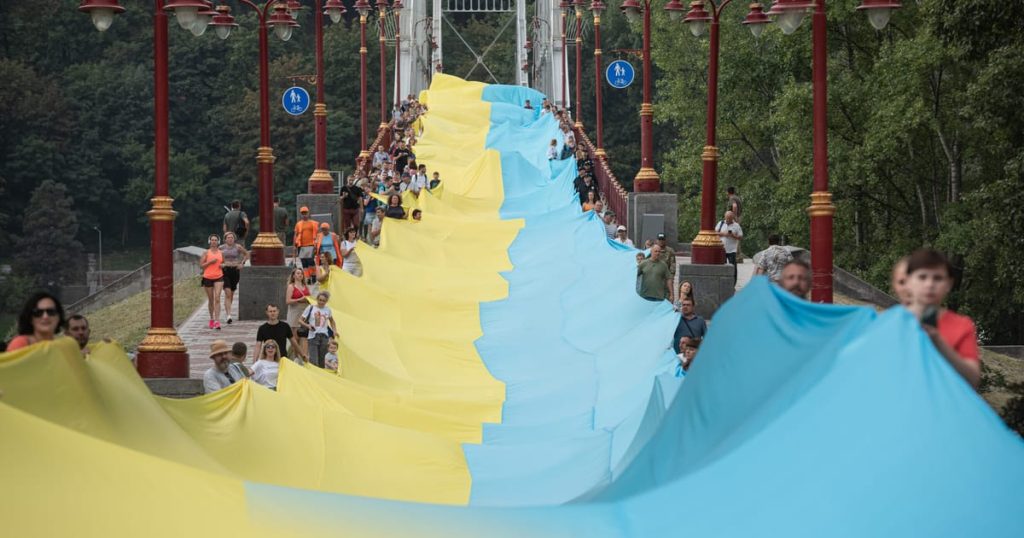John Barranco is a Colonel for the U.S. Marine Corp. He was the 2021-2022 senior U.S. Marine Corps fellow at the Atlantic Council’s Scowcroft Center for Strategy and Security, where he wrote about the Russia-Ukraine war. These views are his own and do not represent those of the Department of Defense or Department of the Navy.
Twelve months ago, while assigned as a senior military fellow to the Atlantic Council, I predicted that if Russian President Vladimir Putin went ahead and ordered an invasion of Ukraine, his forces would quickly stall and fail to achieve their objectives, and that the United States should begin transitioning Ukraine to U.S./NATO equipment in order to prepare for a long war.
This was very much a minority opinion.
The intelligence community, America’s foreign policy establishment, most of the press, and Western academia were all nearly unanimous in their predictions that Russian forces would take Kyiv within 36 hours, decapitate the Ukrainian government and replace it with a puppet regime. U.S. President Joe Biden’s administration initially seemed to think so too, offering Ukrainian President Volodymyr Zelenskyy assistance to evacuate. He declined with the now famous retort, “I don’t need a ride; I need ammunition.”
Thankfully, the dire forecasts were utterly wrong. And led by the U.S., Western powers are now getting Ukraine the ammunition and arms it needs to continue its astounding resistance against Russian aggression. But why did so many intelligent people get it wrong, and what lessons can we learn from the first major war in Europe in over two generations?
In his “History of the Peloponnesian War,” Thucydides wrote: “We must remember that one man is much the same as another and that he is best who is trained in the severest school” — and he had it right 2,400 years ago. The biggest lesson learned in Ukraine today is an old lesson relearned: Equipment doesn’t win wars. People do.
The potential revolution in military affairs promised by new technologies like hypersonic weapons, artificial intelligence and machine learning, space, and cyberwarfare have caused many to lose sight of this old and universal truth about war.
Russia certainly did.
Believing that its technological advantage would ensure an easy and quick victory, Russia attacked along multiple independent axes of advance that weren’t mutually supportive, and it did so with half the forces Ukraine had in defense and no strategic reserve with them.
Moscow didn’t even tell their troops to bring extra or cold-weather clothing — some commanders even told their men to pack dress uniforms for victory parades down Kyiv’s Khreshchatyk Street.
It’s easy to see how Russia was lured into this complacency. The country spent around $65 billion on defense in 2021 — more than ten times Ukraine did that year. And if equipment was to be the deciding factor, Russia would have achieved its predicted overwhelming victory lightning fast, for superior technology can indeed be a game changer if employed effectively.
Still, in this war, Ukraine has shown that good leadership and training — of which it has plenty, but Russia has very little — really do make all the difference.
And since both countries share a long military tradition, dating back from imperial Russia through to the dissolution of the Red Army in the early 1990s, the difference in their respective performances on the battlefield are instructive — as are the reasons behind them.
For one, since 1993, Ukraine has been part of the U.S. National Guard’s State Partnership Program (SPP), where it’s been paired with the California National Guard. This enduring long-term relationship has built close ties between the two forces, and it’s been reported that Ukrainian junior officers texted their California counterparts in the heat of battle for tips on remedial action procedures for Javelin hang fires, and sent them real-time photos of burning Russian tanks after successfully applying them.
Thanks to the SPP, Ukraine’s armed forces have been trained according to the U.S. model of giving mission-type orders to junior and non-commissioned officers (NCOs), explaining the commander’s overall goal, and empowering and encouraging them to make on-the-spot decisions when circumstances change.
No military plan, no matter how brilliant or well-conceived, survives first contact with the enemy perfectly. And no one becomes an expert combat decision-maker overnight. So, the U.S. military trains with realistic exercises, fostering a culture that encourages individual initiative and is rigorously assessed. This way of operating results in high morale, boosts confidence and leads to superior performance on the battlefield.
Trained in the American military way, Ukrainians have also repeatedly displayed innovative small-unit tactics developed for using their Stingers, Javelins, Next Generation Light Anti-Tank Weapons, unmanned aircraft systems, High Mobility Artillery Rocket System (HIMARS), and Neptune anti-ship missiles to inflict massive losses on the Russian forces.
By contrast, Russia’s armed forces, which lack professional NCOs and heavily rely on unmotivated, poorly trained conscripts, discourage initiative and feedback. Decision-making authority remains heavily centralized, with only senior officers permitted to act independently.
This explains why large formations of Russian forces have been bogged down, suffering disproportionately high casualties. It’s also why so many Russian generals have been killed in this war — nobody at a lower level had the leadership experience, big-picture understanding or authority to act decisively when things didn’t go as planned, forcing high-ranking officers to go to the front and make themselves vulnerable.
Russia’s way of war has thus been predictable — battlefield failure and low morale.
Unfortunately, though, the end of the war’s first year isn’t the beginning of the end — it’s only the end of the beginning. But Ukrainians have proven they’re in it for the long haul.
And much like the Greek defeat of the Persian Empire and the Roman Republic’s victory in the Second Punic War, this war has again shown that free citizens fighting for their homeland will always have an edge over the dictatorship trying to conquer them.

